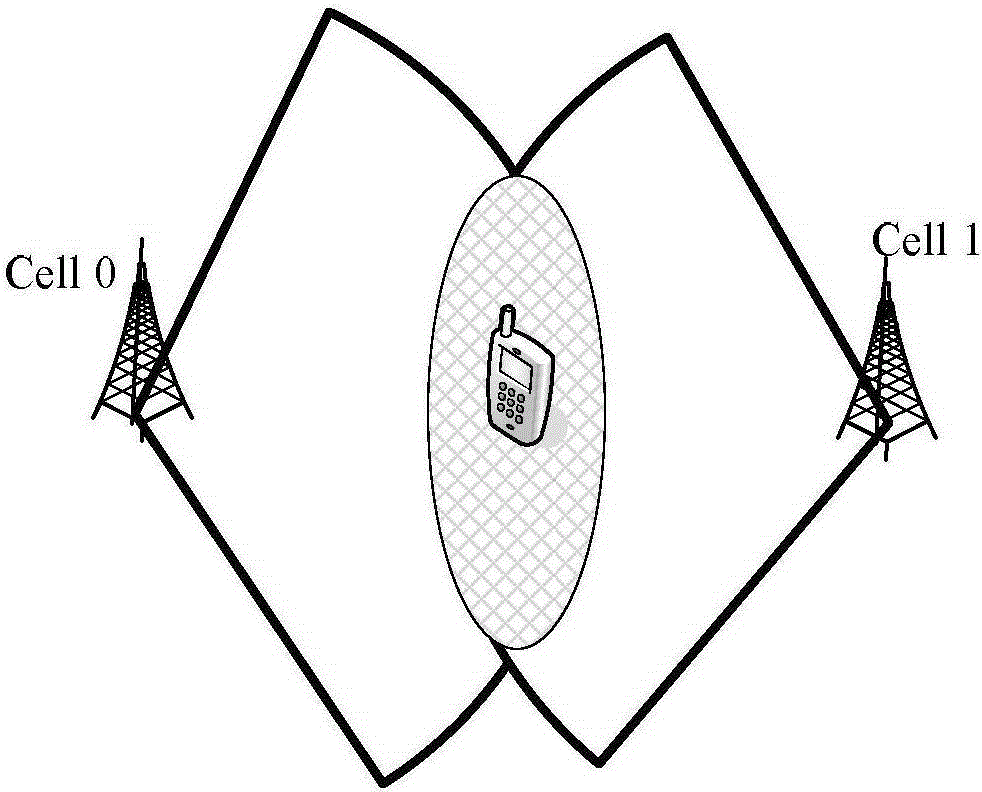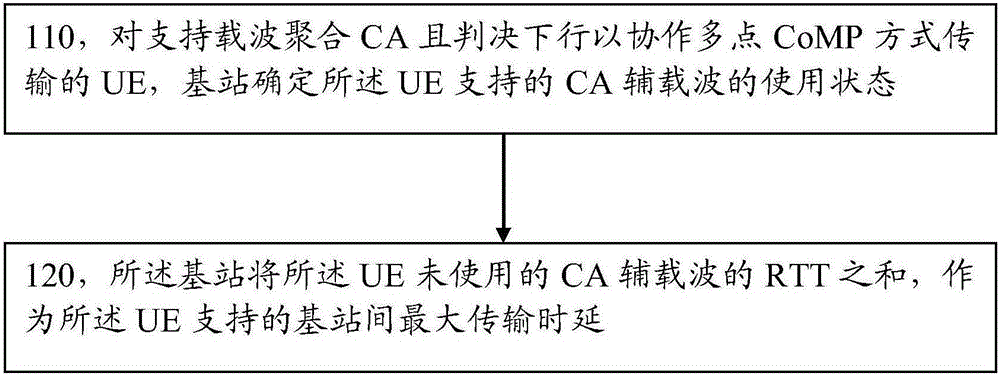Method for achieving coordinated multipoint (CoMP) downlink transmission between base stations and corresponding base stations
A technology between base stations and base stations, which is applied in the field of wireless communication and can solve problems such as difficult to meet, high real-time data transmission requirements, and CoMP performance discounts.
- Summary
- Abstract
- Description
- Claims
- Application Information
AI Technical Summary
Problems solved by technology
Method used
Image
Examples
Embodiment 1
[0106] This embodiment relates to a method for determining the maximum transmission delay between base stations supported by the UE, such as figure 2 shown, including:
[0107] Step 110, for a UE that supports carrier aggregation CA and decides to use coordinated multi-point CoMP for downlink transmission, the base station determines the usage status of the CA secondary carrier supported by the UE, and the usage status is being used or not used;
[0108] For the accessed UE, the base station can learn whether the UE supports CA and the maximum number of secondary carriers supported by the UE. The base station may notify the UE to configure supported CA secondary carriers through RCC signaling, for data transmission on the CA secondary carriers. If the CA secondary carrier supported by the UE is not configured, the CA secondary carrier is not used.
[0109] Step 120, the base station uses the sum of the RTTs of the CA secondary carriers not used by the UE as the maximum tran...
Embodiment 2
[0122] In this embodiment, based on the maximum transmission delay between base stations supported by the UE determined in the first embodiment, a CoMP cooperative neighboring cell is selected for the UE.
[0123] Such as Figure 4 As shown, the method for selecting a CoMP cooperative neighbor cell in this embodiment includes:
[0124] Step 210, according to the method described in Embodiment 1, the base station determines the maximum transmission delay T between base stations supported by UEs that support CA and decide to use CoMP for downlink transmission DELAY-MAX ;
[0125] Step 220, the base station selects one or more co-frequency neighboring cells as CoMP cooperative neighboring cells from the same-frequency neighboring cells that satisfy the delay condition of the UE; The transmission delay of the base station to which it belongs is less than or equal to T DELAY-MAX .
[0126] In this step, the same-frequency neighbor cell of the UE may be obtained according to the...
Embodiment 3
[0136] This embodiment implements coordinated multi-point CoMP downlink transmission between base stations based on the CoMP cooperative neighboring cell selected for the UE in the second embodiment.
[0137] The method for implementing CoMP transmission between base stations in this embodiment is as follows: Figure 6 shown, including:
[0138] Step 310, the base station sends signaling to the UE that supports carrier aggregation CA and decides to use the CoMP method for downlink transmission, instructing the UE to use the HARQ process of the unused CA secondary carrier for CA primary carrier data transmission;
[0139]For example, the signaling in this step may use secondary carrier reconfiguration signaling, through secondary carrier reconfiguration, the HARQ process of the CA secondary carrier is used for CA primary carrier data transmission, but it is not limited thereto.
[0140] Step 320, the base station determines the CoMP cooperating neighbor cell of the UE accordin...
PUM
 Login to View More
Login to View More Abstract
Description
Claims
Application Information
 Login to View More
Login to View More - R&D
- Intellectual Property
- Life Sciences
- Materials
- Tech Scout
- Unparalleled Data Quality
- Higher Quality Content
- 60% Fewer Hallucinations
Browse by: Latest US Patents, China's latest patents, Technical Efficacy Thesaurus, Application Domain, Technology Topic, Popular Technical Reports.
© 2025 PatSnap. All rights reserved.Legal|Privacy policy|Modern Slavery Act Transparency Statement|Sitemap|About US| Contact US: help@patsnap.com



